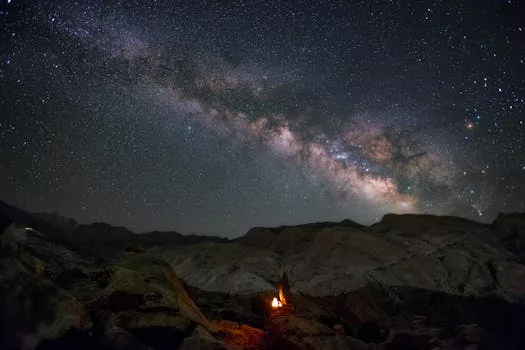
“
Beyond the Milky Way: Imagining New Worlds and Possibilities
Introduction to Beyond the Milky Way: Imagining New Worlds and Possibilities
Beyond the Milky Way: Imagining New Worlds and Possibilities is an exciting topic that has captured the imagination of scientists, astronomers, and space enthusiasts. The Milky Way is just one of billions of galaxies in the observable universe, and the possibility of other worlds existing beyond our own is a tantalizing prospect. In this article, we will delve into the latest discoveries and advancements in space exploration, and explore the possibilities of new worlds beyond the Milky Way.
Understanding the Milky Way
The Milky Way is a barred spiral galaxy that contains hundreds of billions of stars, as well as various types of interstellar gas and dust. It is estimated to be about 100,000 light-years in diameter, and is thought to be about 13.6 billion years old. The Milky Way is just one of many galaxies in the observable universe, and is part of the Local Group of galaxies, which also includes the Andromeda Galaxy and several smaller galaxies.
Exploring the Universe Beyond the Milky Way
There are many reasons why scientists and astronomers are interested in exploring the universe beyond the Milky Way. One of the main reasons is the search for extraterrestrial life. The possibility of life existing elsewhere in the universe is a topic of ongoing research and debate, and the discovery of exoplanets and other celestial bodies has provided new opportunities for scientists to search for signs of life. Another reason for exploring the universe beyond the Milky Way is to gain a better understanding of the formation and evolution of the universe itself.
New Discoveries and Advancements
There have been many new discoveries and advancements in space exploration in recent years. One of the most significant discoveries was the detection of gravitational waves by the Laser Interferometer Gravitational-Wave Observatory (LIGO) in 2015. Gravitational waves are ripples in the fabric of spacetime that were predicted by Albert Einstein’s theory of general relativity, and their detection has provided new insights into the nature of the universe. Another significant discovery was the detection of exoplanets, which are planets that orbit stars other than the Sun. Over 4,000 exoplanets have been discovered so far, and many of these planets are believed to be located in the habitable zones of their respective stars, where conditions are suitable for life to exist. This exciting topic is further explored in From Stardust to Dreams: Imagining Life Beyond the Stars.
Imagining New Worlds and Possibilities
As we continue to explore the universe beyond the Milky Way, we are constantly imagining new worlds and possibilities. One of the most exciting possibilities is the existence of other intelligent life forms. The discovery of extraterrestrial life would be a major breakthrough, and would raise many questions about the nature of life and the universe. Another possibility is the existence of other universes or dimensions, which is a topic of ongoing research and debate in the fields of cosmology and theoretical physics. The creativity involved in such explorations can be likened to the vastness of creative potential.
Takeaways
- The Milky Way is just one of billions of galaxies in the observable universe.
- The possibility of other worlds existing beyond our own is a tantalizing prospect.
- Scientists and astronomers are interested in exploring the universe beyond the Milky Way for many reasons, including the search for extraterrestrial life and the desire to gain a better understanding of the formation and evolution of the universe.
- There have been many new discoveries and advancements in space exploration in recent years, including the detection of gravitational waves and exoplanets.
- As we continue to explore the universe beyond the Milky Way, we are constantly imagining new worlds and possibilities, including the existence of other intelligent life forms and other universes or dimensions.






